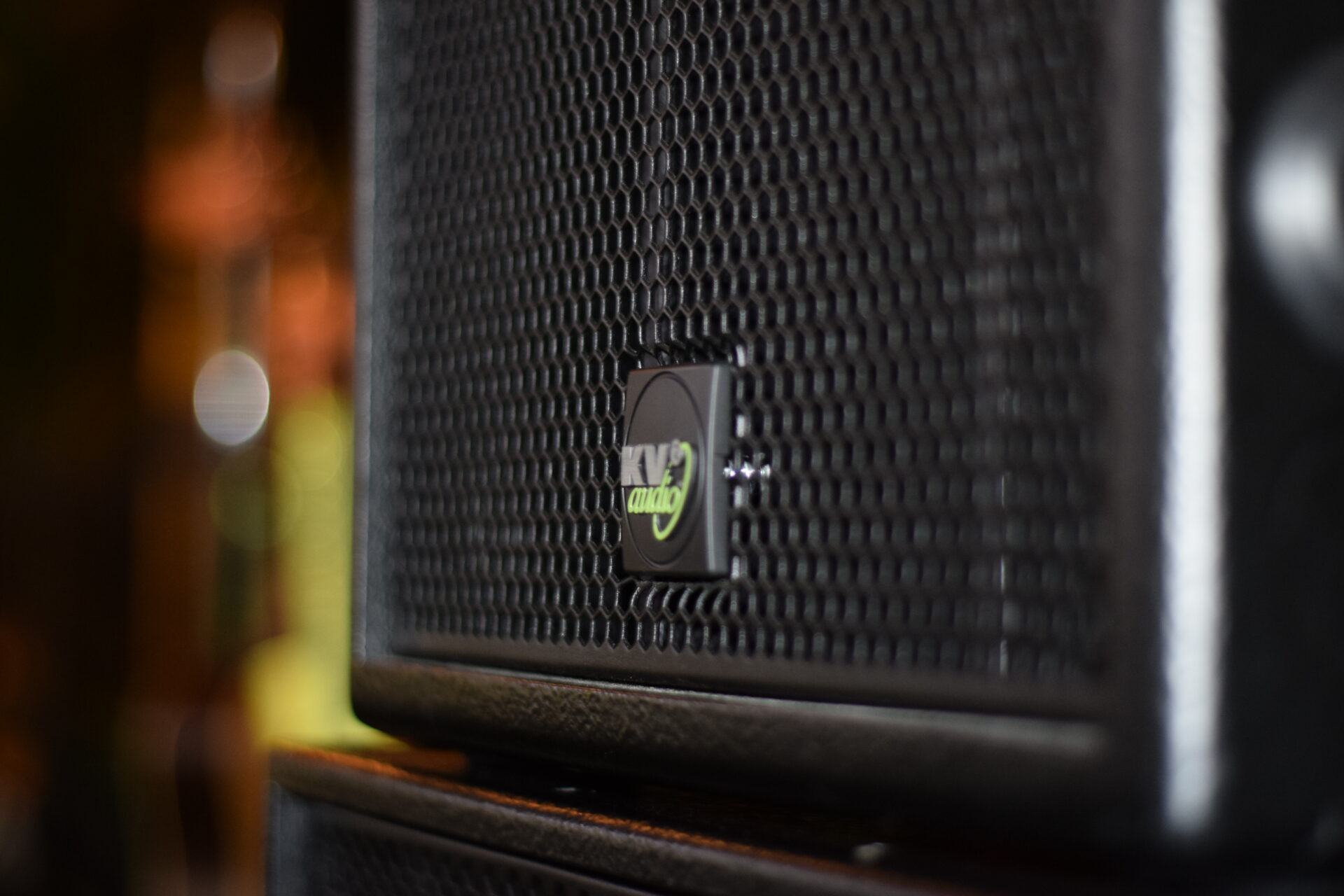Welcome to our comprehensive beginner’s guide to setting up a voice-controlled smart home. In this article, we will delve into the fascinating world of voice-enabled smart home devices, exploring their numerous benefits and capabilities, as well as providing you with a step-by-step guide to seamlessly integrate these state-of-the-art technologies into your daily life. We will cover the essential elements of a smart home ecosystem, including choosing the right voice assistant, selecting compatible devices, and configuring them to work in harmony to create an effortless, personalized, and efficient home environment. So, whether you are a tech-savvy enthusiast or a newcomer to the world of smart homes, this guide will provide you with valuable insights and practical advice to help you embark on your journey towards a fully voice-controlled living space.
Top Voice Assistants for a Seamless Smart Home Experience
Choosing the right voice assistant is the key to unlocking the full potential of your smart home. These AI-powered digital assistants serve as the central hub for controlling and managing various smart devices, enabling you to conveniently control your home environment using only your voice. In this section, we will discuss the leading voice assistants in the market, their unique features, and how they stack up against each other to help you make an informed decision.
Amazon Alexa: The Market Leader
Amazon’s Alexa is arguably the most popular voice assistant available today. It has a vast range of compatible devices and a rapidly growing selection of skills, enabling you to control everything from smart lights to thermostats and even order your favorite pizza. With continuous updates and improvements, Alexa’s capabilities keep expanding, making it a strong contender for the top spot in any smart home setup.
Google Assistant: An Intelligent Choice
Google Assistant, powered by the tech giant’s advanced AI, offers a robust and versatile alternative to Amazon Alexa. This voice assistant excels in natural language processing and knowledge, making it easier for users to communicate with their devices. With a wide range of compatible devices and integration with popular services like Google Calendar, Google Assistant adds a great deal of convenience and functionality to any smart home.
Apple Siri: A Familiar Face
For Apple enthusiasts, Siri is a familiar and well-loved voice assistant. While not as dominant as its competitors, Siri has made significant strides in recent years, especially with the introduction of the HomePod smart speaker. With its tight integration with the Apple ecosystem, Siri is an ideal choice for those who already own multiple Apple products and seek a seamless smart home experience.
Microsoft Cortana: The Underdog
Although not as popular as the other options on this list, Microsoft’s Cortana still holds its own as a voice assistant for smart homes. Cortana’s strength lies in its integration with Windows 10 devices and Microsoft services like Office 365. For users heavily invested in the Microsoft ecosystem, Cortana can be a convenient choice for managing their smart home devices.
As you consider the various voice assistants available, keep in mind that your choice will largely depend on your personal preferences, existing devices, and the level of integration you desire within your smart home setup. By carefully evaluating the features and compatibility of each option, you can select the perfect voice assistant to create a seamless and intuitive smart home experience.
Essential Voice-Controlled Devices for Your Smart Home
In this section, we will explore some of the essential voice-controlled devices that can significantly enhance your smart home experience. From managing your home’s climate to securing your property, we will discuss various devices designed to work seamlessly with your chosen voice assistant, turning your smart home into a truly connected and cohesive ecosystem. These devices not only offer unparalleled convenience, but also help improve the overall efficiency of your home, ultimately making your life easier and more enjoyable.
Smart Lighting: Illuminate Your Home the Smart Way
Smart lighting is one of the simplest yet most impactful upgrades you can make to your smart home. Voice-controlled smart bulbs and switches enable you to adjust the brightness, color, and even set schedules for your lights using simple voice commands. Compatible with all major voice assistants, smart lighting systems such as Philips Hue or LIFX can instantly transform your home’s ambiance while also helping you save on energy costs.
Smart Thermostats: Comfort and Energy Savings at Your Command
Voice-controlled smart thermostats, like the Nest Learning Thermostat or ecobee, allow you to regulate your home’s temperature effortlessly. By integrating with your voice assistant, you can easily adjust the temperature, set schedules, or switch between heating and cooling modes using voice commands. These advanced thermostats also learn your preferences over time and can make adjustments automatically, ensuring optimal comfort and energy efficiency.
Smart Door Locks: Secure Your Home with a Word
Smart door locks, such as the August Smart Lock or Schlage Encode, provide an added layer of security and convenience to your home. With voice control, you can lock or unlock your doors, grant temporary access to guests, or check the status of your lock from anywhere in your home. This not only enhances your home’s security but also simplifies daily routines like heading out to work or going to bed.
Smart Speakers and Displays: The Central Hub of Your Smart Home
A high-quality smart speaker or display, such as the Amazon Echo or Google Nest Hub, serves as the central hub for your voice-controlled smart home. These devices not only house your chosen voice assistant, but also enable you to stream music, make video calls, and even display relevant information like weather forecasts or calendar events. By strategically placing these devices throughout your home, you can ensure that voice control is always within reach.
Smart Home Security Systems: Peace of Mind Through Voice Control
Voice-controlled smart home security systems, like Ring or SimpliSafe, empower you to monitor and manage your home’s security using voice commands. From arming and disarming your system to checking the status of your security cameras, these advanced systems offer unparalleled peace of mind and convenience. Additionally, many of these systems offer seamless integration with other smart home devices, such as smart lighting or door locks, for a truly cohesive security solution.
By carefully selecting and integrating these essential voice-controlled devices into your smart home, you can create a truly connected living space that caters to your unique needs and preferences. As technology continues to advance, the possibilities for voice-controlled smart homes will only grow, offering even more innovative solutions to simplify and enhance our daily lives.
Step-by-Step Guide on Connecting Voice Assistants to Smart Devices
Setting up a voice-controlled smart home may seem daunting at first, but with a little guidance and patience, you’ll be on your way to creating a seamlessly connected living space. In this section, we’ll provide you with a detailed step-by-step guide on how to connect your chosen voice assistant to various smart home devices. We’ll also explore some common challenges and troubleshooting tips to ensure a smooth and successful setup process.
1. Choose Your Voice Assistant and Smart Home Hub
Before you can connect your devices, it’s essential to select a voice assistant that best suits your needs and preferences, as discussed in the previous sections of this article. Once you’ve chosen your voice assistant, invest in a compatible smart home hub, such as the Amazon Echo for Alexa or the Google Nest Hub for Google Assistant. This hub will serve as the central control point for your smart devices and enable you to issue voice commands throughout your home.
2. Set Up Your Smart Home Hub and Voice Assistant
After acquiring your smart home hub, follow the manufacturer’s instructions to set up and configure the device. This process typically involves connecting the hub to your Wi-Fi network, downloading the corresponding mobile app, and signing in with your account credentials. Once set up, ensure your voice assistant is activated and ready to receive commands.
3. Install and Configure Your Smart Home Devices
Now that your voice assistant and smart home hub are operational, it’s time to install and configure your chosen smart devices. Follow the manufacturer’s guidelines for each device, which may include connecting them to your Wi-Fi network, downloading their respective apps, and creating user accounts. Make a note of any unique device names, as this will be important when linking them to your voice assistant.
4. Pair Your Smart Devices with Your Voice Assistant
With your smart devices installed and configured, the next step is to connect them to your voice assistant. In the voice assistant’s app, navigate to the section dedicated to adding and managing smart home devices. This process may vary depending on your chosen voice assistant, but generally involves selecting the appropriate device category, scanning for available devices, and adding them to your voice assistant’s ecosystem. You may be prompted to sign in to the device’s account or grant necessary permissions during this process.
5. Customize Voice Commands and Routines
Once your devices are successfully linked to your voice assistant, take the time to customize voice commands, group devices by room, and create routines or automations for added convenience. For example, you can assign specific names to devices, like “Bedroom Lights,” to easily control them through voice commands. Additionally, you can create routines that trigger multiple actions with a single command, such as turning off all lights and locking the doors when you say, “Goodnight.”
6. Test Your Voice-Controlled Smart Home Setup
With everything connected and configured, it’s time to put your voice-controlled smart home to the test. Issue various voice commands to control your devices and ensure everything is functioning as intended. If you encounter any issues, consult the troubleshooting guides provided by your voice assistant or device manufacturers, as they often contain valuable tips and solutions.
By following this step-by-step guide, you’ll be well on your way to creating a voice-controlled smart home that caters to your unique needs and preferences. As you grow more comfortable with your smart home ecosystem, don’t hesitate to explore new devices and integrations to further enhance your living space and simplify your daily life.
Customizing Voice Commands for Effortless Home Automation
As you delve into the world of voice-controlled smart homes, you may find that the default voice commands for your devices may not always align with your preferences or daily routines. Customizing voice commands allows you to tailor your smart home experience to your unique needs, creating an even more seamless and effortless environment. In this section, we will explore various techniques and strategies for customizing voice commands, enabling you to take full advantage of the capabilities offered by your voice assistant and smart devices.
Creating Custom Device Names and Groupings
One of the simplest ways to customize your voice commands is by assigning unique, descriptive names to your smart devices. For example, instead of using generic terms like “Light 1” or “Thermostat,” consider more specific labels such as “Kitchen Lights” or “Upstairs Thermostat.” This not only makes it easier for you to remember and use voice commands, but also helps your voice assistant differentiate between devices.
In addition, group your smart devices by room or function to streamline voice commands further. For instance, you can create a group called “Living Room” that includes your smart lights, speakers, and television. This allows you to control multiple devices simultaneously with a single voice command, such as “Turn off the living room lights” or “Set the living room temperature to 72 degrees.”
Creating Custom Shortcuts and Phrases
Many voice assistants offer the option to create custom shortcuts or phrases that trigger specific actions or routines. These shortcuts can simplify your voice commands, making it even more effortless to control your smart home. For example, instead of saying “Turn on the kitchen lights and set the brightness to 50%,” you could create a custom phrase like “Set kitchen lights to evening mode” that performs the same action.
To create custom shortcuts or phrases, consult the documentation for your chosen voice assistant and follow the instructions provided. This may involve navigating to a specific section within the voice assistant’s app and inputting the desired phrase and corresponding action or routine.
Setting Up Routines and Automations
Routines and automations are powerful tools that enable you to perform multiple actions with a single voice command. For example, you can create a “Good Morning” routine that turns on your bedroom lights, starts your coffee maker, and plays your favorite morning playlist. By customizing these routines to align with your daily habits and preferences, you can further enhance the convenience and efficiency of your voice-controlled smart home.
To set up routines and automations, navigate to the appropriate section within your voice assistant’s app and select the devices and actions you wish to include. You can also specify triggers, such as a specific time of day, voice command, or even changes in your smart home’s environment, to ensure your routines are tailored to your unique needs.
By implementing these customization techniques, you can create a truly personalized voice-controlled smart home experience that caters to your preferences and simplifies your daily life. As you become more comfortable with your smart home ecosystem, continue to explore new devices and integrations to further enhance your living space and harness the full potential of voice-controlled home automation.
Ensuring Privacy and Security in Your Voice-Controlled Smart Home
As you embark on your journey towards establishing a voice-controlled smart home, it’s essential to consider the privacy and security implications of these advanced technologies. Voice assistants and connected devices offer unparalleled convenience and automation, but they can also expose your personal information and home to potential threats if not properly secured. In this subsection, we will discuss various strategies and best practices for ensuring your voice-controlled smart home is both private and secure, enabling you to enjoy the benefits of this cutting-edge technology with confidence and peace of mind.
Maintaining Privacy with Voice Assistants
Voice assistants, such as Alexa or Google Assistant, rely on cloud-based services to process and store your voice commands. While these companies have implemented strong security measures, it’s important to remain vigilant and take additional steps to protect your privacy. Some practical approaches include regularly reviewing and deleting your voice command history, disabling voice purchasing or requiring a PIN for purchases, and utilizing the mute button on your smart home hub when not in use. By being proactive about your privacy, you can minimize the risk of unauthorized access or misuse of your personal information.
Securing Your Wi-Fi Network and Connected Devices
A strong and secure Wi-Fi network is the backbone of any voice-controlled smart home. To ensure the security of your network, make sure to use a strong, unique password, enable WPA3 encryption, and keep your router’s firmware up to date. Additionally, consider setting up a separate network for your smart home devices, as this can help isolate them from your primary network and reduce potential vulnerabilities.
For each connected device, ensure they are also secured with strong, unique passwords and receive regular firmware updates. When purchasing smart home devices, opt for reputable brands with a proven track record of security and privacy.
Implementing Two-Factor Authentication
Two-factor authentication (2FA) adds an extra layer of security to your voice-controlled smart home by requiring a secondary form of verification, such as a text message or authenticator app, in addition to your password. By enabling 2FA on your voice assistant’s account and any associated smart device accounts, you can significantly reduce the risk of unauthorized access and maintain better control over your smart home ecosystem.
Staying Informed and Vigilant
As technology continues to evolve, so do the potential threats to your voice-controlled smart home. Stay informed about the latest security updates, industry news, and best practices by subscribing to relevant newsletters, blogs, or forums. Regularly review the privacy policies of your voice assistant and connected devices to ensure you are aware of any changes or potential risks. By staying informed and vigilant, you can proactively address any security concerns and maintain a safe and secure voice-controlled smart home environment.
By implementing these privacy and security measures, you can enjoy the numerous benefits of a voice-controlled smart home without compromising the safety of your personal information or living space. As you continue to explore and expand your smart home ecosystem, always prioritize security and privacy, ensuring that your home remains a sanctuary of comfort, convenience, and peace of mind.





Leave a reply